Ghana, Nigeria and the quest for UK looted treasure
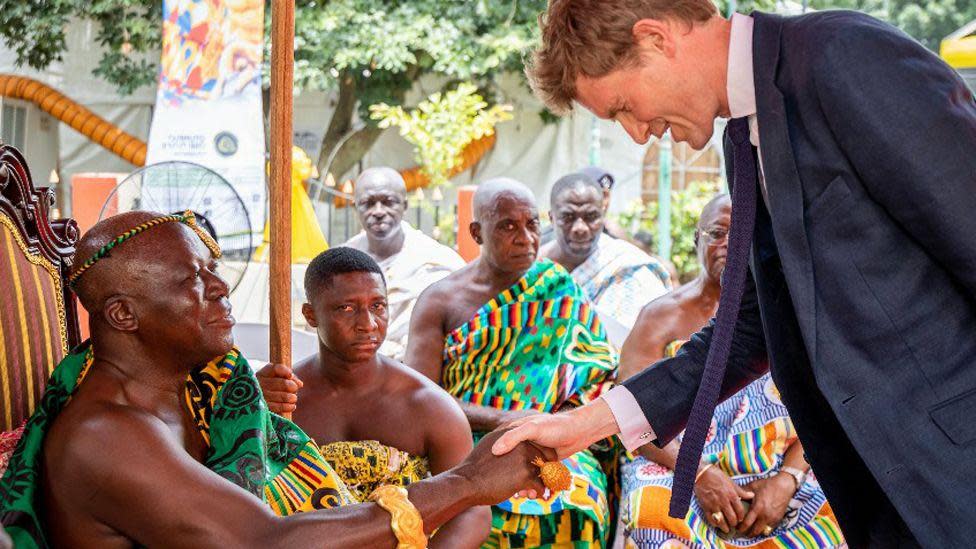
Artefacts looted by the British in the colonial era have been returned to Ghana and are already on public view. So why is it taking Nigeria so long to put its returned treasures on display?
A convoy sped along the busy road from Ghana’s capital, Accra, to the central city of Kumasi on 12 April, carrying an unusual and highly valuable cargo.
A police motorcycle cleared the road with its flashing blue lights and blaring siren. In a van behind were crates containing 32 pieces of gold and silver, including beautiful and intricate necklaces, a peace pipe and a ceremonial sword.
Almost all of these objects were taken by British soldiers who invaded Asante land in 1874 and 1896, and plundered the palace of the king, or Asantehene. They have been in the UK ever since.
The convoy drove fast to Kumasi and the Manhyia Palace, home of today’s king, Otumfuo Osei Tutu II.
He opened the crates, amid emotional scenes.
The Asante people have been asking for the return of the plundered gold for decades.
“We did it,” said Osei Tutu II.
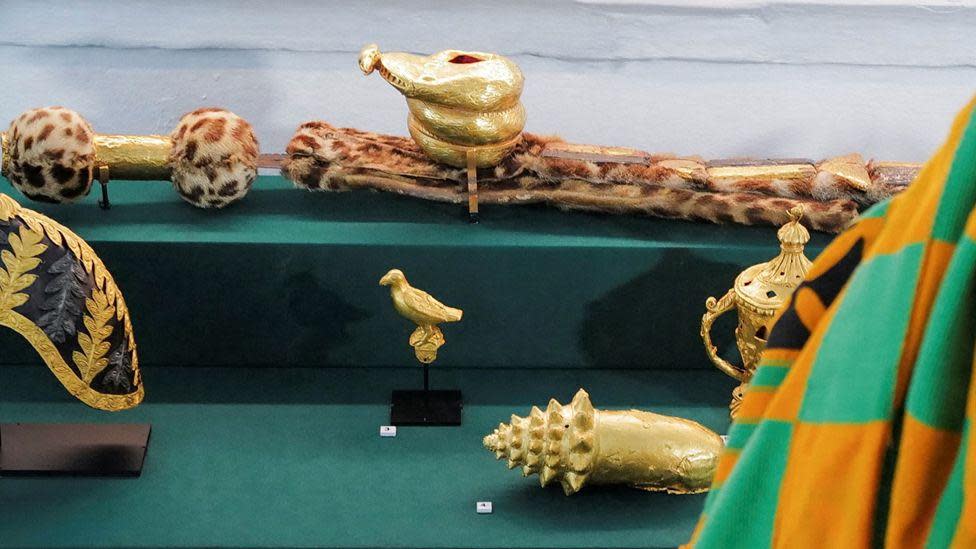
“These items that were stolen, looted… not all of them have come back," the monarch said on 1 May, as the gold was publicly displayed in the Manhyia Palace Museum.
“But those we have here still embody the soul of Asante.”
Ivor Agyeman-Duah, an author and former diplomat, is the director of the Manhyia Palace Museum. He was also in that convoy, anxious nothing should go wrong.
Mr Agyeman-Duah has been a key player in the negotiations over the return of the Asante gold, which was in two of the UK’s leading museums: the British Museum and the Victoria and Albert (V&A).
He is a cool-headed and persuasive man, but the negotiations have been complicated.
The two institutions are prevented by British law from permanently returning items, so the objects have come to Ghana on long-term loan.
For many, that is a bitter pill to swallow.
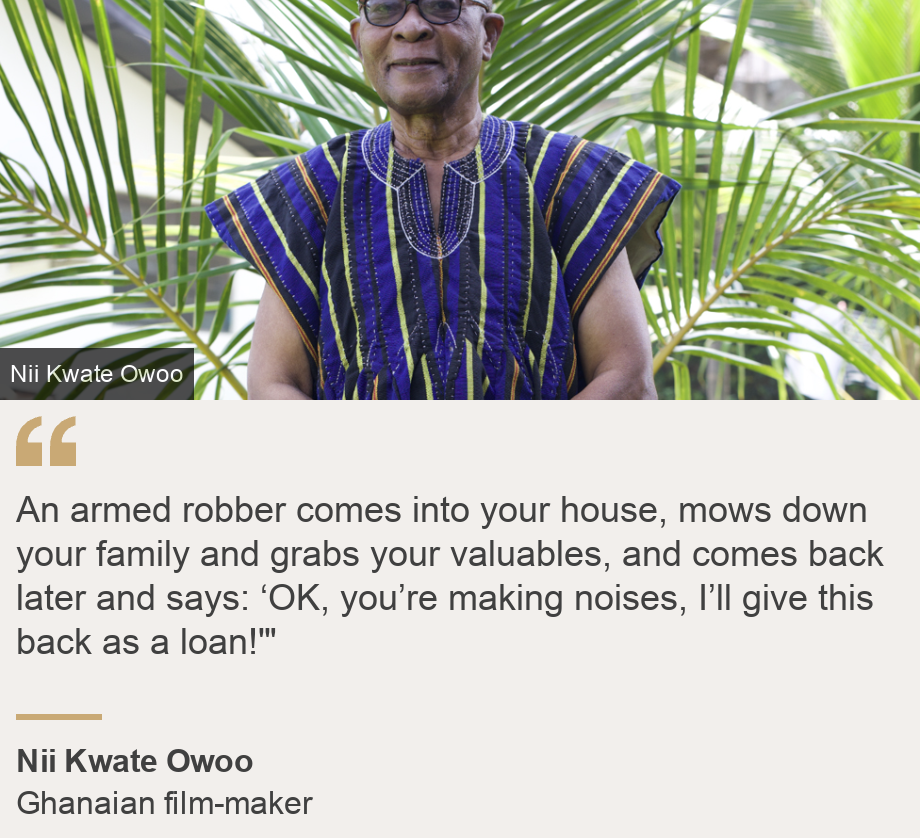
Nii Kwate Owoo, a celebrated Ghanaian film-maker who was at the ceremony in Kumasi on 1 May, made his name in the 1970s with his documentary You Hide Me, which lambasts the British Museum for hoarding African treasures.
“An armed robber comes into your house, mows down your family and grabs your valuables, and comes back later and says: ‘OK, you’re making noises, I’ll give this back as a loan!’” Mr Owoo told me, deeply unimpressed by the British terms.
Mr Agyeman-Duah understands these emotions - his own great-grandfather was exiled by the British during the Anglo-Asante wars - but is confident the Asantehene chose the right path.
“We’ve been talking about this for 50 years, and nothing happened… if we couldn’t find a middle way, we’d have just continued with this stalemate,” he argues.
There are obvious similarities between the British pillaging of Kumasi and another notorious episode in West African colonial history - the sacking of the palace of the king, or Oba, in Benin City in 1897, in what is today Edo State, southern Nigeria.
That was when the British took the Benin Bronzes - thousands of brass castings and ivory carvings - which are at the forefront of the debate around looted artefacts in Western museums.
Nigeria has had some success in its campaign for the return of the bronzes.
In 2022 the German government announced the transfer of ownership of some 1,000 Benin Bronzes.
Germany’s Foreign Minister Annalena Baerbock flew to Nigeria’s capital, Abuja, and handed over 22 of the most spectacular objects to the Nigerian government.
She said it was “a step that was long overdue”.
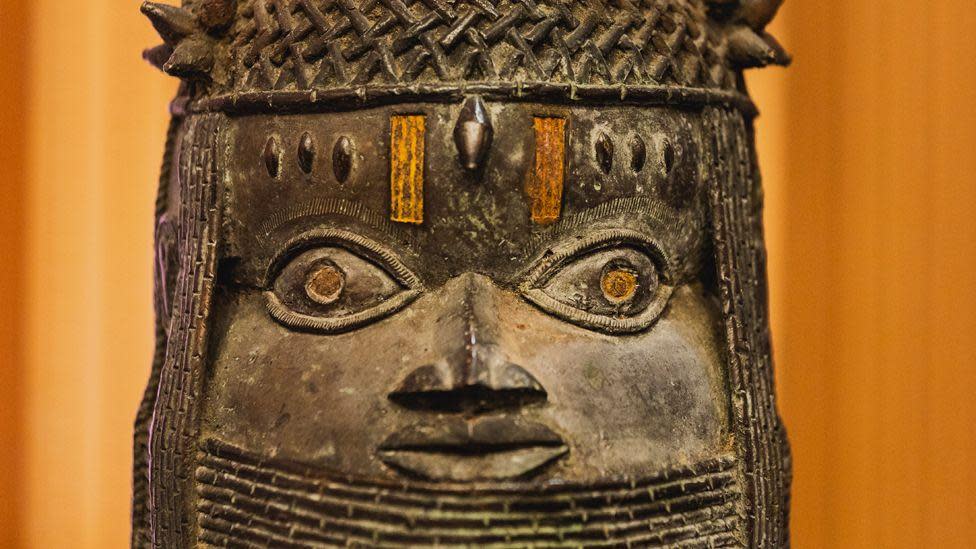
Almost one-and-a-half years later, none of the bronzes she returned have been displayed in public since.
They, and others which have trickled back from museums in the UK and the US, are in secure storage - while two are in the Oba’s palace in Benin City.
A government official promises a display “soon”, but would not specify when.
Nigeria’s National Commission for Museums and Monuments (NCMM) and the Oba’s palace have had disagreements over the ownership of the Benin Bronzes.
A much-discussed Benin Royal Museum is yet to materialise.
The NCMM is concentrating its limited resources on building a new storage facility in Benin City, which it says will be “impregnable” - to allay concerns that returned items may be less secure in Nigeria than in Western countries.
Another Benin City project, the Museum of West African Art (MOWAA), supported by the local governor Godwin Obaseki, is due to open in November, but has stepped back from any public discussions about the bronzes after disputes with the Oba.
Some museums in the UK and US that were on the verge of transferring ownership of their Benin Bronzes are now hesitating, confused by Nigeria’s internal divisions.
The Benin Dialogue Group, which brings together Nigeria and Western museums to discuss the bronzes, was due to meet this month. It has postponed that meeting until 2025.
There are mitigating factors.
Nigeria’s elections last year, and the subsequent drawn-out appointments of ministers and a new head of the NCMM, have caused delays.
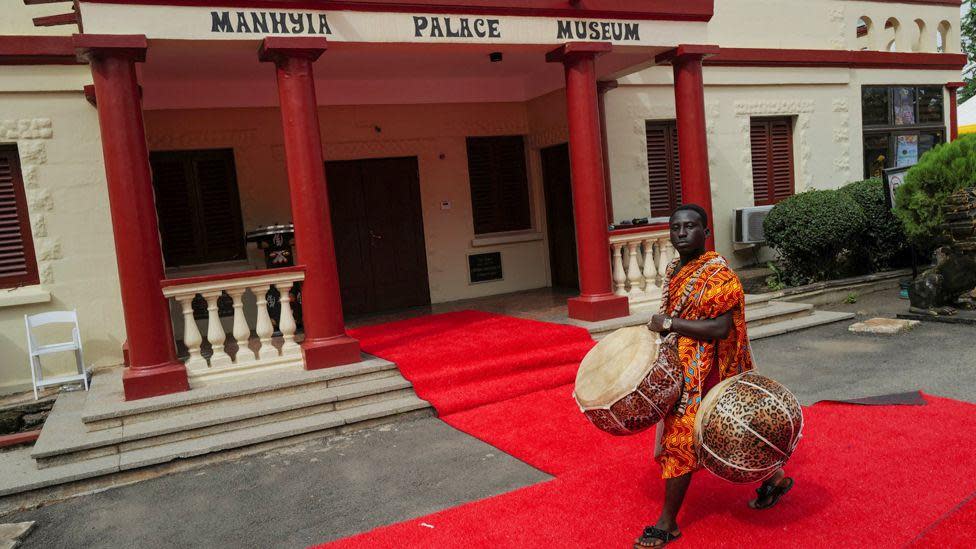
But in Ghana the politics have been smoother, at least so far.
The Ghanaian government has been kept informed of agreements between the private Manhyia Palace Museum and Western museums, but has chosen not to intervene.
This means less bureaucracy, and quicker decisions, according to those involved.
In February, the Fowler Museum from the University of California permanently returned seven looted items of Asante gold - these too are now on display at Manhyia.
Mr Agyeman-Duah is busy negotiating more returns - he is in talks with the Wellcome Collection in the UK and AngloGold Ashanti in South Africa, about gold objects they possess.
Ghanaians, meanwhile, can already benefit from the objects which have come back.
Mr Agyeman-Duah hopes the numbers of visitors to the Manhyia Palace Museum will double over the next year.
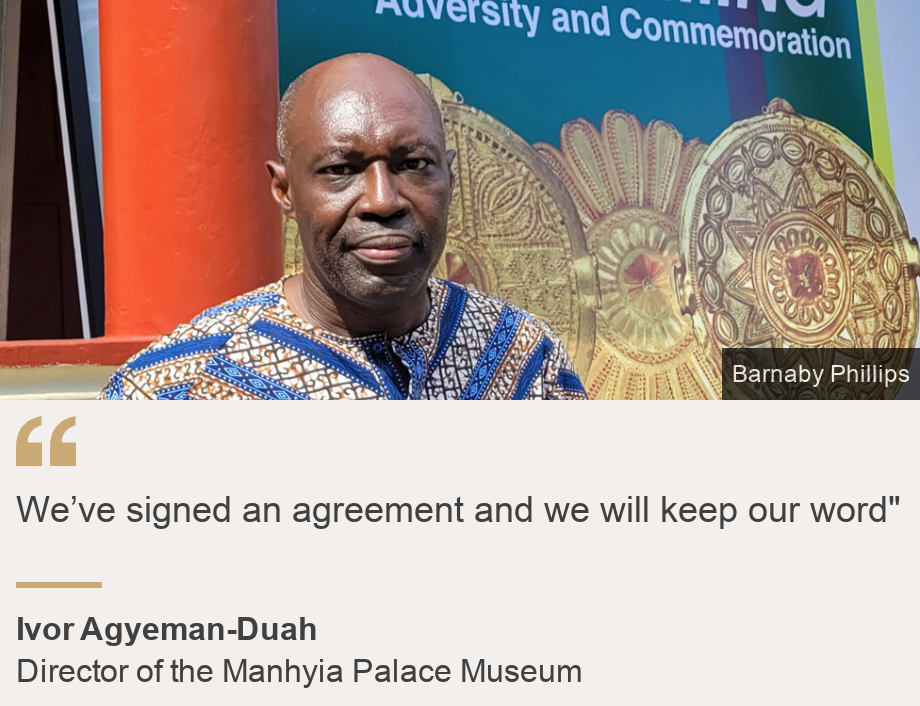
He urges people not to concentrate on the loan terms, but instead enjoy the reality that these wonderful objects have come home.
“Let’s show our children these creations of 150 years ago, and say: ‘Your ancestors, your forebears, were able to do these marvellous productions.’ And it could inspire them to do similar things,” he says.
The loan with the British Museum and V&A is for three years, with the possibility of a three-year renewal.
If, after that, the museums asked for the gold to go back to London, what would Mr Agyeman-Duah do?
He does not hesitate: “We’ve signed an agreement and we will keep our word.
“Otherwise what kind of signal does it send?”
Barnaby Phillips is the author of Loot: Britain and the Benin Bronzes and is now writing a book about the Asante gold.
You may also be interested in:

Go to BBCAfrica.com for more news from the African continent.
Follow us on Twitter @BBCAfrica, on Facebook at BBC Africa or on Instagram at bbcafrica
